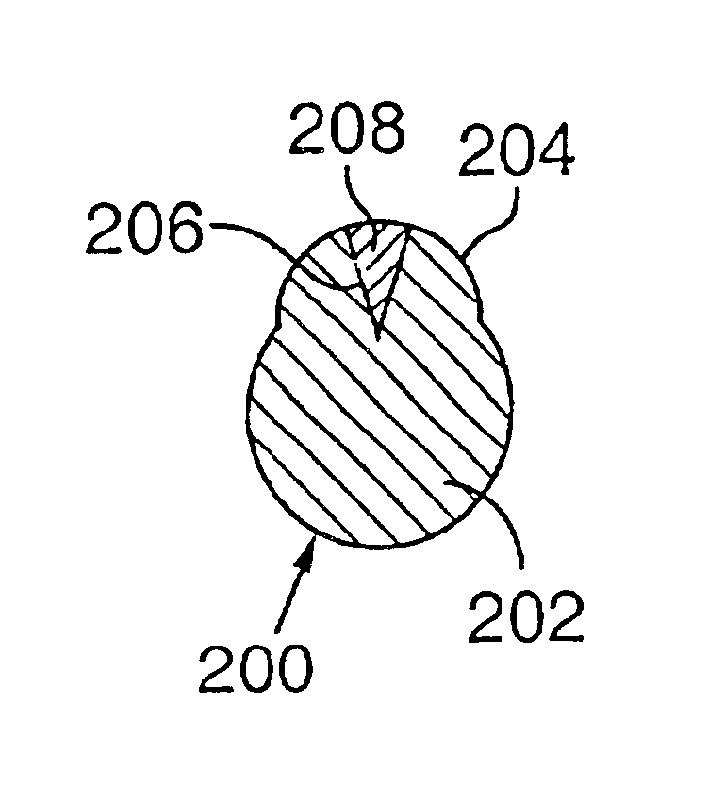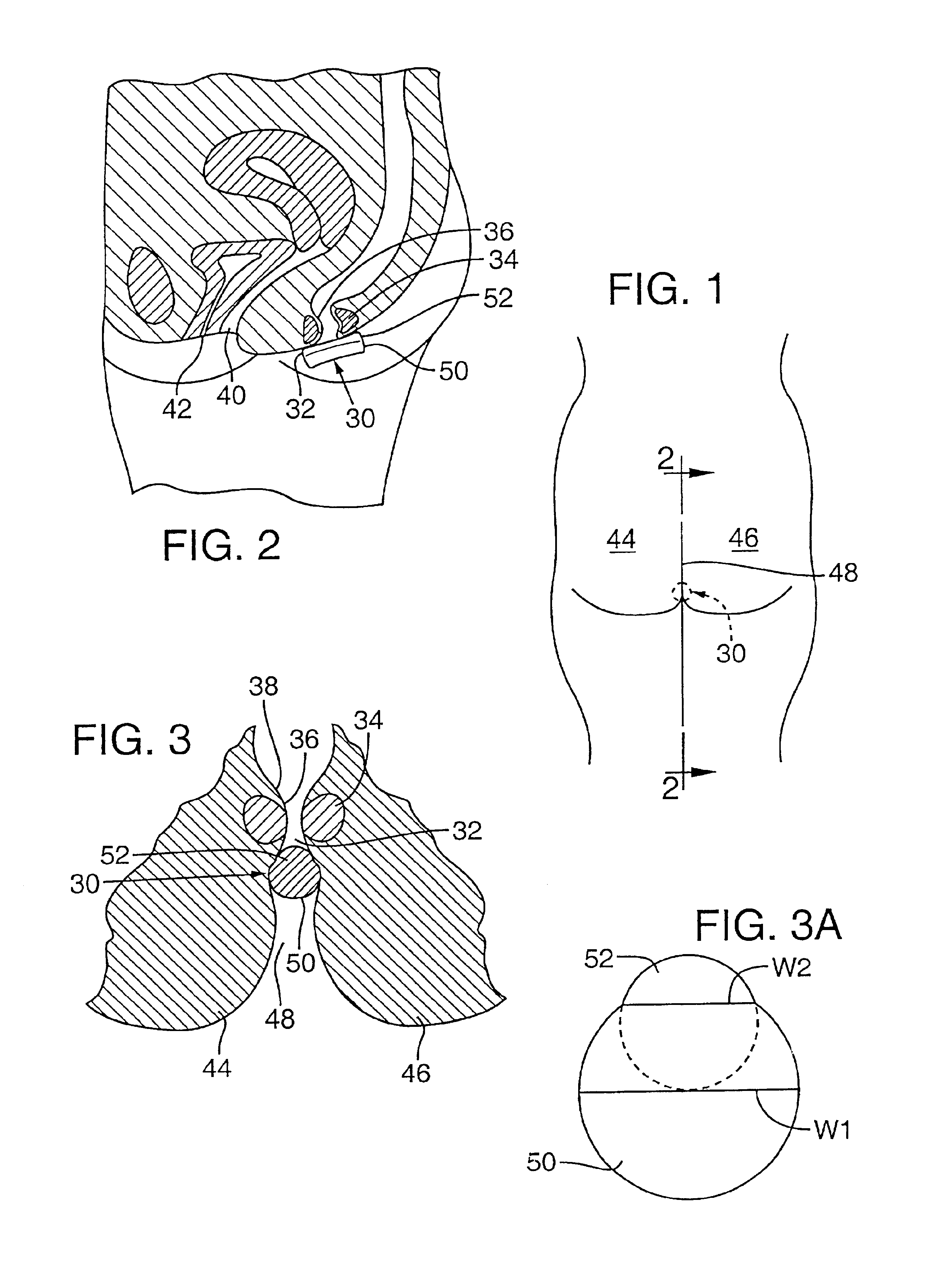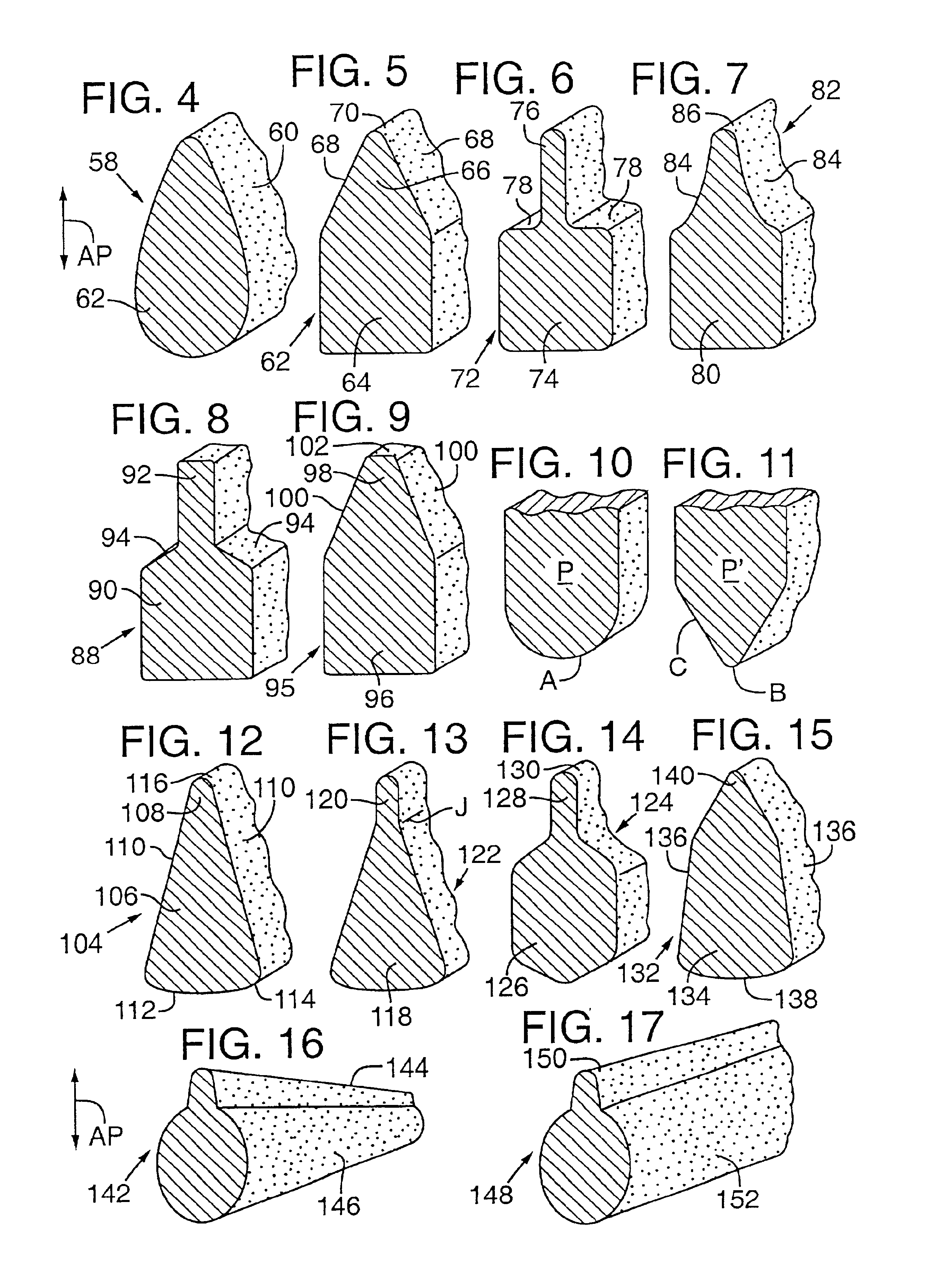Administration of therapeutic or diagnostic agents using interlabial pad
a technology of interlabial pads and therapeutic or diagnostic agents, which is applied in the direction of bandages, sanitary towels, surgery, etc., can solve the problems of loss of therapeutic efficacy, difficulty in administering agents in this fashion, and messy topical administration, etc., to facilitate local and transdermal administration of many different agents, and reduce discomfort of the subj
- Summary
- Abstract
- Description
- Claims
- Application Information
AI Technical Summary
Benefits of technology
Problems solved by technology
Method used
Image
Examples
first embodiment
the invention is shown in FIGS. 1-3. FIG. 1 illustrates the urogenital anatomy of a female. Interlabial space 32 is approximately bounded by the labia majora 34. Anatomical structures found within the interlabial space include the labia minora 36, vaginal orifice 38, urethral orifice 40, and clitoris 42. The perineum is a term that often refers to the pelvic outlet that gives passage to the urogenital ducts and anus, but it is sometimes used in a more restricted sense to refer to the area 44 which lies between interlabial space 32 and the anus 46.
FIG. 2 is a sagittal section of female urogenital anatomy, and illustrates that in this embodiment of the invention, interlabial pad 30 is positioned in interlabial space 32 approximately adjacent labia majora 34, vaginal orifice 38, and urethral orifice 40.
In the embodiment disclosed in FIGS. 2-3, interlabial pad 30 is an elongated absorbent member, for example made of cotton, and has a bipartite profile with a major portion 50 and a minor...
example 1
Method of Making the Pad
In one embodiment the application devices, such as pads, are molded or otherwise formed from the cellulose base material, to the desired cross sectional and longitudinal configurations by apparatus and procedures known in the art, or formed as described in Gerstenburger. The active agent (such as the drug or diagnostic reagent) can, for example, be applied in a liquid form by a liquid applicator, between the dancer and puller.
A specific example of a liquid application system 400 is shown in FIG. 33, in which the rope to make a pad passes through a sewing station 402, a puller 404, and a dancer 406. Interposed between puller 404 and dancer 406 is a liquid applicator 408, which includes an applicator head 410, mounted on a stand 412, and connected to a source of liquid through a flexible conduit 414.
A more detailed example of liquid application system 400 is illustrated in FIG. 34, which includes a bulk tank 420 to hold the liquid to be applied, a conduit 422 c...
example 2
Method of Using the Pad
In use, some embodiments of the application device, such as the pad, would be inserted into the interlabial space and retained for a sufficient period of time to deliver the active agent, or allow sufficient time for reaction with a diagnostic reagent. If the active agent is a diagnostic agent (such as a monoclonal antibody), then the pad could be retained for a period of minutes to allow the reaction to occur. If the agent is a drug intended for topical application (such as the anti-fungal agent miconazole), then the pad is retained in place for a sufficient period of time, for example 30 minutes to 4 hours, to allow the miconazole to be transmitted to the adjacent labial skin and vagina. Alternatively, if the drug is intended for transdermal delivery (for example of estrogen) then a longer period of transfer may be desired, in which the pad is retained for at least one or two hours. If the pad is removed before the desired period of time has elapsed (for exa...
PUM
 Login to View More
Login to View More Abstract
Description
Claims
Application Information
 Login to View More
Login to View More - R&D
- Intellectual Property
- Life Sciences
- Materials
- Tech Scout
- Unparalleled Data Quality
- Higher Quality Content
- 60% Fewer Hallucinations
Browse by: Latest US Patents, China's latest patents, Technical Efficacy Thesaurus, Application Domain, Technology Topic, Popular Technical Reports.
© 2025 PatSnap. All rights reserved.Legal|Privacy policy|Modern Slavery Act Transparency Statement|Sitemap|About US| Contact US: help@patsnap.com



